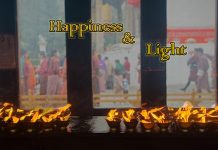ABANDONING the clutches of civilisation and taking time off to go walking through history and enjoy 800km of reflective wandering is not for everyone, but should be on the list of things to do at some point in one’s life.
It was when I was relaxing in the picturesque plaza of San Juan de Ortega, a little Spanish village that has fewer residents than a modest apartment block, that I seriously asked myself what had made me decide to walk the Camino de Santiago.
We — my 30-year-old son, Shivantha, and I — had just completed a 25km walk along picturesque woodland paths and earthen tracks that day. Having showered and completed washing our clothes in the albergue in which we were staying for the night, we had walked along to the plaza and sat ourselves down on a rustic wooden bench, with nothing else to do except sip a very pleasant glass of Rioja wine and soak up the afternoon sun.
It was the ideal opportunity to contemplate the question: whatever had made a conservative middle aged man like me simply take six weeks off work and spend this time walking 800km across the north of Spain along a trail called the Camino de Santiago, when I had so many more “important” things to do in my life — such as conduct a busy medical practice, teach medical students, write research papers, earn money and create wealth?
A Walk For All
The Camino is not as well recognised in Asia as it is in Europe. There, called the Way of Saint James in English, Le Chemin de St Jacques in French, Jakobsweg in German and El Camino de Santiago in Spain, it has over the centuries been attracting “pilgrim” walkers in their thousands.
Legend has it that the relics of Saint James, one of Jesus Christ’s 12 apostles (who is called Santiago in Spanish) are buried in the magnificent cathedral of Santiago de Compostela in northwestern Spain. For the past thousand years or so, devout pilgrims, mostly Catholics, have been trekking their way from various parts of Europe to worship at the shrine.
Now I myself am not a Catholic. However, an oft-quoted 12th century poem reassured me that the Camino was “open to all…the sick and the well, not only Catholics but also pagans, Jews, heretics and vagabonds”.
Perhaps, I reasoned, since I have so many Jewish friends with whom I have shared Shabbat meals over the years, I might be able to pass myself off as an honorary Jew. On the other hand, since I belong to a traditional Buddhist family from Sri Lanka, I should qualify as a practising pagan. If all else fails I reasoned that I might, being essentially a nonconformist at heart, simply claim to be accepted as a heretic or a vagabond.
But I need not have worried about my credentials. These days, around 100,000 “pilgrims” walk or cycle all or part of The Way each year — many for religious and spiritual reasons, others for cultural or touristic reasons, and yet others just for the physical challenge.
Heritage Status
The numbers are rising, popularised perhaps by novels like Paolo Coelho’s The Pilgrimage and movies like Emilio Esteves’ The Way. In 1987 the Council of Europe designated the Camino a Cultural Itinerary of Europe — the first such route to be so honoured. In 1993 UNESCO awarded the Camino World Heritage status.
In fact, The Camino consists of several trails originating in various parts of Europe that have been converging on Santiago since the 9th century when St James’ tomb was first discovered there.
Time For Reflection
The most popular is the Via Frances or French Way that commences in the little town of St Jean Pied de Port at the foothills of the Pyrenees in France and traverses northern Spain to reach the cathedral city (itself a World Heritage site) near the Atlantic coast.
Spending six weeks walking the Camino was a great way to get to Santiago — allowing father and son to enjoy some breathtaking scenery in addition to sampling the culture, the food and the wine of Spain in the company of various like-minded pilgrims.
Five to seven weeks is the time most of those who undertake the Camino require to cover the path. Pilgrims however do not need to walk the whole way to benefit from the trek. We met folks who had set out to walk just part of the Camino for a week or so, and others who, having walked a portion of the way in the fortnight of annual leave they were allowed last year, had returned this year to continue their journey from where they had left off.
Clear Passage
Recognising the contribution that so many thousand visitors can make to their economies, the regional governments of Spain ensure that the path is clearly way-marked and well maintained. Every 10–15km one finds convenient cheap accommodation in the form of albergues run by local monasteries, municipalities and private individuals which, for around €5, offer pilgrims a place to sleep for the night. This is usually in dormitories with bunk beds, although a few do have a limited number of rooms available for about €20 per person.
Some albergues as well as most restaurants along the Camino provide for about €10 a reasonable three-course pilgrim meal consisting of a soup or salad, a main dish of fish or meat, and a dessert, accompanied by water and/or wine. In order to avail oneself of the facilities at these albergues, one needs a Pilgrim Passport, known as a Credencial, which can be obtained from the pilgrim office in St Jean Pied de Port — or alternatively by post from one of the official Pilgrim Confraternities (eg American Pilgrims on the Camino http://www.americanpilgrims.com).
You might also like to read:
9 Alternative Getaways for 2017
Who Will Get You The Best Airfares?
And whether you do it for spiritual reasons, cultural reasons or just for the physical challenge, The Camino is certainly a path worth walking.
Time To Myself
When was the last time, I asked myself, that I was able to step away from work matters beyond my control — and do something that I wanted to do for myself? All we had to do on The Camino was walk at our own pace, stopping for the night or for a meal where our fancy took us, staying a day longer at places where we felt that we would like to see something of interest.
Perhaps it was the very simplicity of this idea of pilgrimage that attracted me — six weeks of travelling light, living out of a haversack and just walking.
It allowed me the opportunity of slackening the hectic pace of my life to the natural rhythm of human walking, dispensing with things like “to do” lists, work schedules and planners.
A Historical Ramble
What better way to spend a glorious spring day than hiking through beautiful country, admiring picturesque views of the Pyrenees or passing through quaint Spanish villages that still have a medieval air about them? We crossed Roman bridges over two millennia old, passed through ancient walled towns like Astorga, and walked past impressive Templar castles such as Ponferrada.
When we reached the big cities, we often took a day off to see the tourist sights in the vicinity — such as the amazing new Museum of Human Evolution in Burgos or the magnificent Cathedral in Leon. At the end of the day’s walk we had the choice of staying in a cheap albergue or a less inexpensive pension or motel.
Meeting People
My memories of the Camino are made up of people, places and connections. Folks like Roland who had left his farm in Lyons in France to walk all the way to Santiago with his pet donkey Praline. Evenings like the one we spent at the Albergue San Nicolas, a restored 12th century hospice where we had our evening meal by candlelight and then sat outside with our companeros to watch the sunset. Places like the picturesque river at Logrono, beside which we had a picnic lunch with Greg who, having walked with us for the two weeks of annual leave he had, was leaving us that evening to return to Canada.
If you decide to walk the Camino yourself you can walk alone (which gives time for reflection), undertake the journey with a friend or family member or use the opportunity to meet people and make new friends.
You might also like to read:
Rocks In The Ocean — Shetland Islands
Was my desire to undertake this journey due to an interest in ancient history and contemporary Spain or a search for something spiritual? Or simply the result of a personal quest and the desire to prove to myself that, at the age when most of my colleagues have retired from their lifelong jobs, I could still accomplish a challenge like this? Could it have been a desire to spend time with my son, getting to know him as an adult and a colleague?
Having walked the entire stretch, I am still not sure what — one of the above, some of the above or all of the above — made me decide to do it.
This article was first published in STORM in 2012.
Main Image: Nacho Such / Shutterstock.com



















